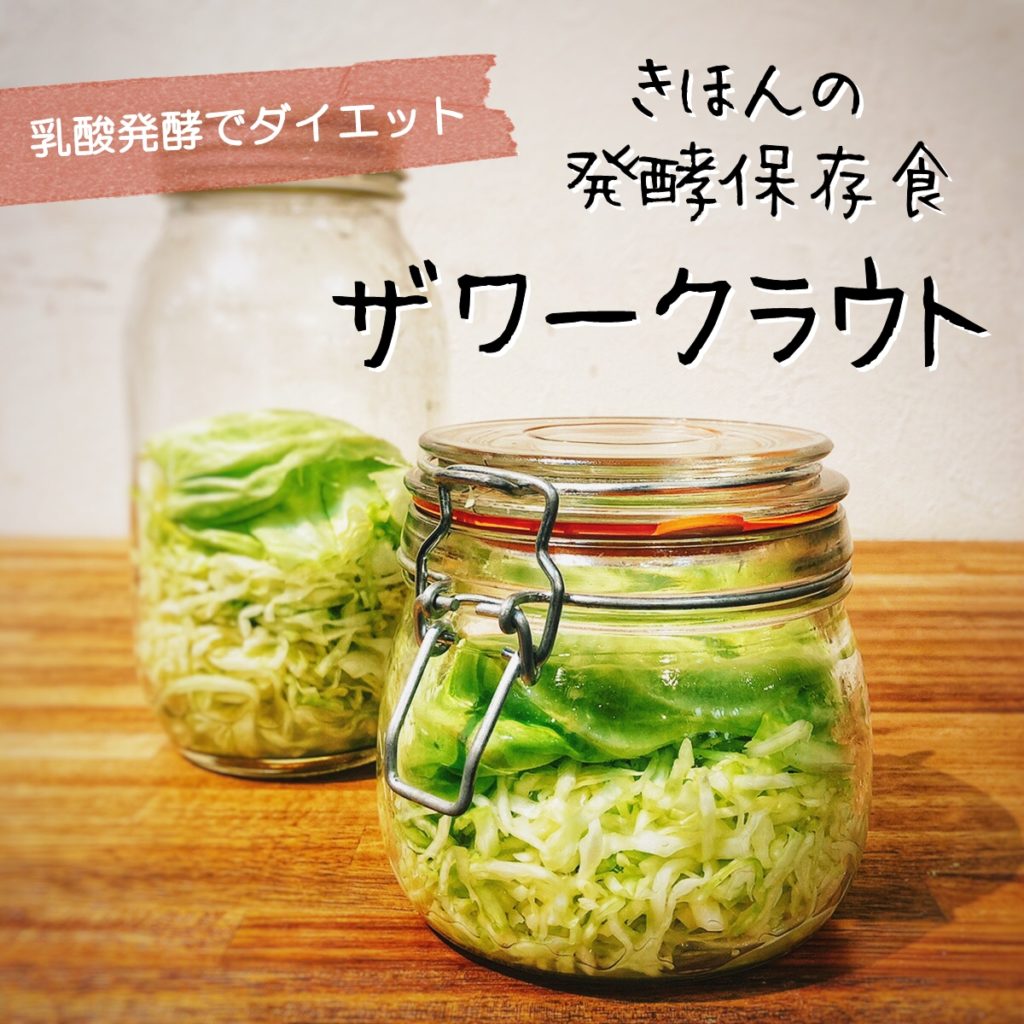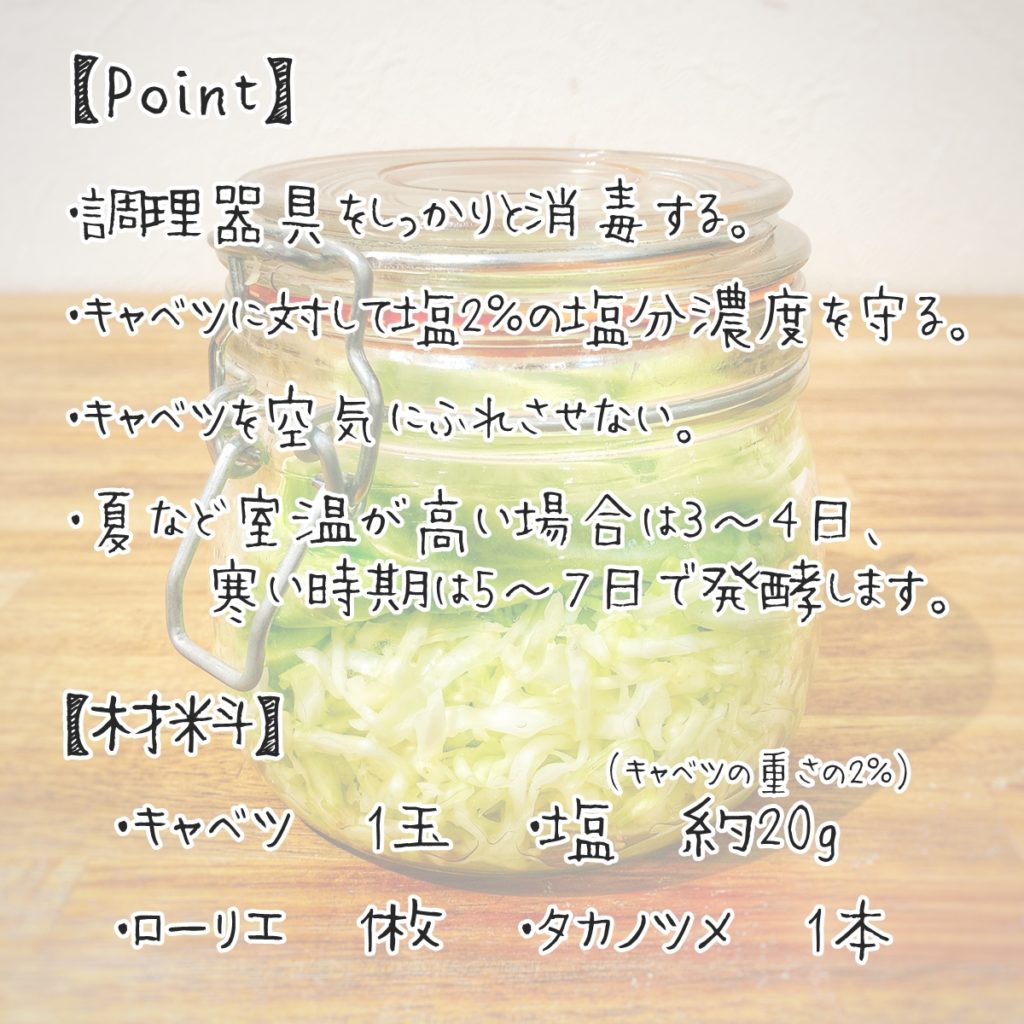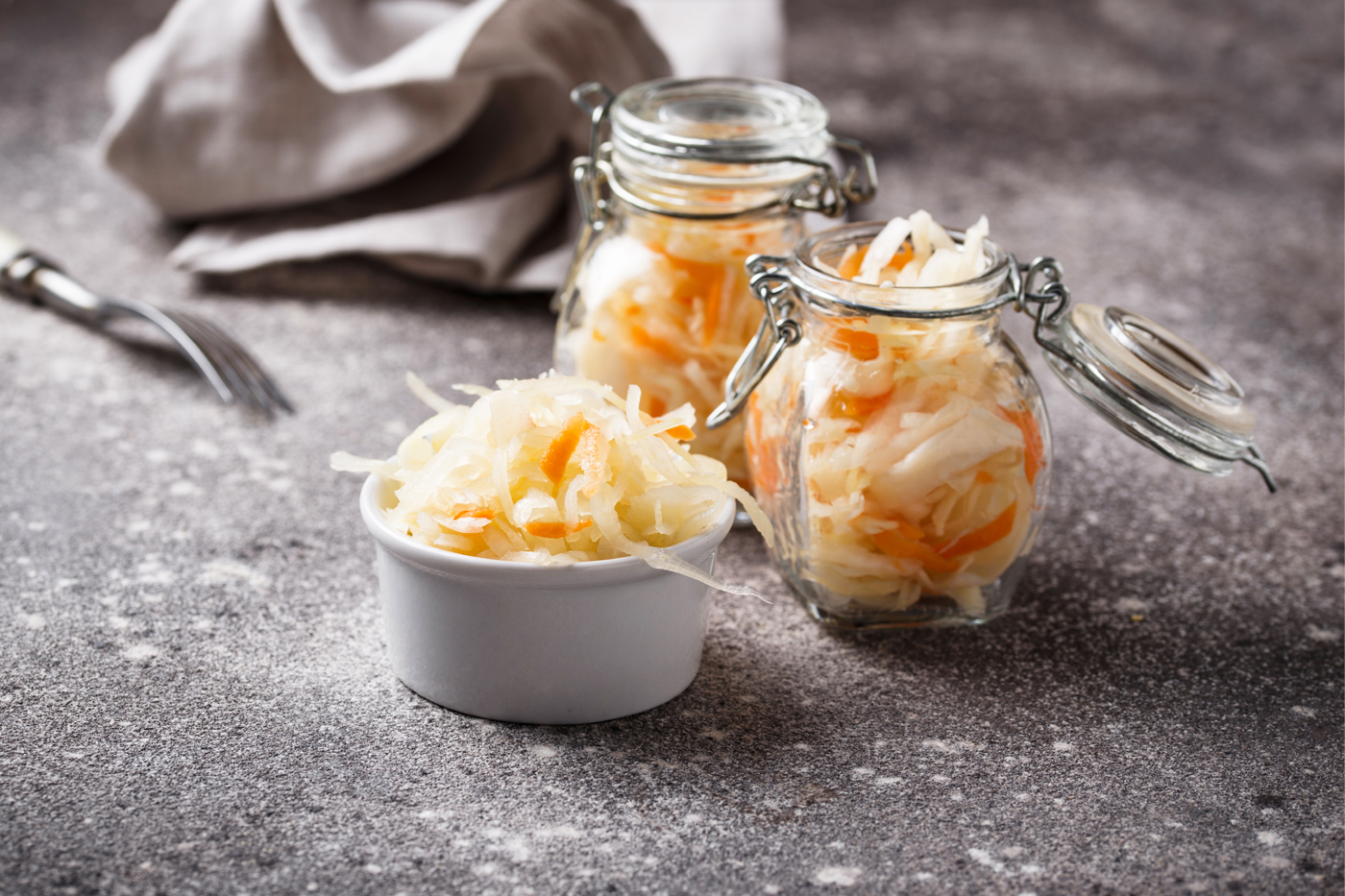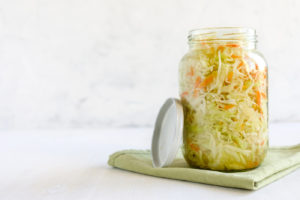Hello (• ⌄ •) ◞
Introducing recipes that allow you to easily incorporate fermented foods into your daily diet ♪
Today, fermented preserved food “sauerkraut”

Sauerkraut, whose prototype was born in ancient Roman times, has a habit of preparing plenty of it as a preserved food in winter, which tends to be deficient in vitamins in Germany.
It is rich in nutritional components such as vitamin U, calcium, and dietary fiber, and in addition to the nutritional components originally possessed by cabbage, the nutritional components increase due to fermentation, making it ideal for intestinal activity.
Moreover, since it is a plant-derived lactic acid bacterium, it can reach the intestines more easily than animal-derived lactic acid bacteria such as yogurt, and can be expected to have a more intestinal regulating effect.
When the intestinal environment is in order, the skin is in order, and there are many things that women are happy with.
It’s very easy to make ♪ It
‘s a fermented preserved food that’s perfect for beginners as it can be arranged in various ways .

[Material]
1 cabbage, salt about 20g (2% of the weight of cabbage)
1 bay leaf, 1 gamblea innovans
[How to make]
1. Sterilize cooking utensils such as cutting boards and bowls with boiling water, and boil the storage container.
2. Remove the outer leaves of the cabbage, remove the hard core and cut into julienne.
Weigh 3 or 2 and put it in a bowl, sprinkle 2% of the amount of salt, and rub it in by hand until it becomes soft.
4. Add herbs and spices if you like and mix. Push it firmly by hand and fill it in a storage bottle.
5. Drop the leaves on the outside of the cabbage, cover it with a wrap like a lid, and put a clean weight on it.
6. Fermentation takes 3-4 days when the room temperature is high, such as in summer, and 5-7 days when it is cold.
[Point]
・ Disinfect cooking utensils thoroughly.
・ Keep the salt concentration of 2% salt for cabbage.
・ Do not let the cabbage come into contact with the air.
・ For antiseptic purposes, add gamblea innovans.
 العربية
العربية
 الإنجليزية
الإنجليزية
 الفرنسية
الفرنسية
 الإسبانية
الإسبانية





